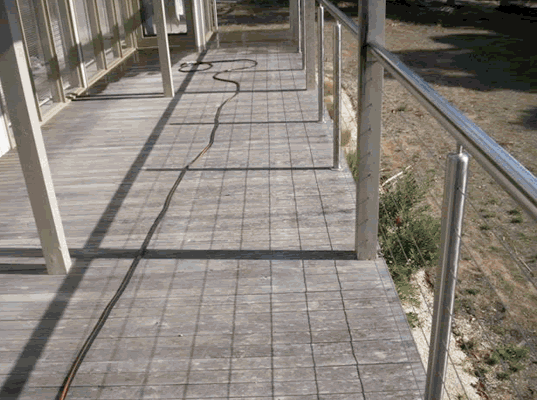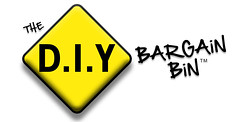
Does your deck look like this? If so do not despair, follow our steps here. Image supplied by Cutek.
With the footy prelim finals only a few days away we can start to turn our attention to the summer days and barbeques that will fill those non footy hours until next year. It is therefore timely to start thinking about those summer preparation tasks that will help make them all the more enjoyable. Previously we have featured articles on maintaining your pool and your barbeque, so today we are going to turn our attention to the deck. In fact we are going to run a 10 day feature on everything you need to know about your deck!
So if you already have a deck, it is important to ensure that it is maintained. What your deck is made of will influence how much maintenance it needs, however all decks even new ones will need to be sealed and given a little TLC to keep them looking their best. Here is our step by step for maintaining your deck:
1. Clear and sweep your deck before you start.

The difference is almost impossible to believe. This bench has just had the end of three boards sealed. Image from Cutek
2. Look over your deck first to identify any broken, loose or badly damaged boards. If you have any of these you will need to replace them.
3. Now investigate for nails that are protruding from the timber. These can do so much damage to bare feet, and given it is summer, who really wants to wear shoes. If you find any give them a good hammer to ensure that the surface of your deck is flat.
4. Choose your timber sealant. Some products require that the old paint or stain be removed prior to sealing so it is a good time to do your shopping. Select both a sealant and if you have kids, animals or plants, a non-toxic cleaning solution. In Australia a popular choice for sealing timber decks is by using Cutek. Cutek works by penetrating deeply into the timber, others just coat the top, which when scratched or damaged will cease to protect that exposed surface. In addition it doesn’t breakdown in sunlight and is designed to protect against Australian pests like termites! Finally Cutek is also safe for humans, animals and the environment. More information can be found at Timber Coatings Australia.
5. Depending on the instructions on your sealant (you may need to strip back paint or old coats of stain first) then you will be ready to clean your deck. There are a number of substances like dirt and grime that over time will build up on the surface of the deck, even if it is predominantly under cover. Think about your deck usage, barbeque grease and fat that has splattered from the grill, that dropped sausage or spilled drink, how many pairs of shoes have walked across it, do you have pets etc?. The build up of this grime can lead to the deck being rough, or alternatively slimy if it starts to grow a mossy film. Yuck, so lets remove it.
6. Follow the instructions of your cleaning solvent and using a brush with bristles scrub at the deck. Some solutions will require you spray the deck first, so do this if required. Basically you just need to ensure that you complete the steps as indicated by your particular cleaning product.
6. Rinse the deck by hosing it down, then allow it to fully dry.
7. You are now ready to seal your deck. You can do this by painting it (roller or brush) or spraying it. Again if you have plants and other things you want to protect, we recommend taking the time to use a brush or roller. Whatever you choose ensure that you have carefully read, understand and follow the instructions on your chosen sealant. If you have chosen a Cutek sealant there are additional instructions here.
8. With your deck now sealed, you are ready to replace your chairs and barbeque. String up the fairy lights and wait for the summer weather to roll around.
Before you go visiting the hardware stores, check out the DIY Bargain Bin Paints, Oils, Stains, Varnishes and Painting Supplies first.









